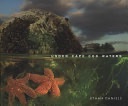|
 |
Under Cape Cod Waters
|
Ethan Daniels
|
 |
Nature, Animals, Marine Life, Ecosystems & Habitats, Oceans & Seas, Plants, Aquatic, Photography, Subjects & Themes, Plants & Animals, Photoessays & Documentaries, Regional, Underwater, Science, Earth Sciences, Oceanography, Travel, United States, Northeast, New England (CT, MA, ME, NH, RI, VT)
|
Union Park Press
|
In Under Cape Cod Waters, award-winning photojournalist Ethan Daniels captures the mystery and importance of the often overlooked natural communities along the Cape Cod coast. The Cape's near-shore waters are both diverse and productive, making these coastal ecosystems as dynamic and prodigious as any along the Atlantic shoreline. With the trained eye of a scientist and the sensibilities of an artist, Daniels photographs the amazing and resilient life forms that play such a vital role in maintaining the health and wellbeing of this cherished peninsula. The result is a stunning portrait of a world only seen from the surface. In the hazy, dark waters, Daniels reveals the arresting orange of a sponge, the silvery flash of fish scales, the bright blue of a crab claw. With chapters on each of the Cape's aquatic ecosystems--the salt marsh, bay, open ocean, and freshwater ponds--Daniels at once enlightens and educates us about the treasures hidden amidst this mesmerizing seascape.
|
|
|
|
